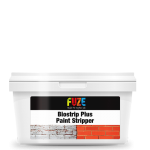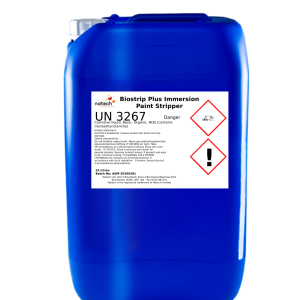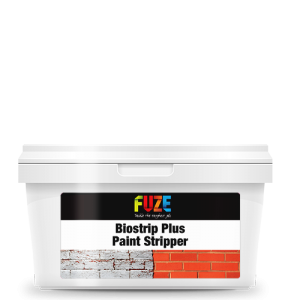
How Biostrip 20 Paint Stripper is Promoting Reuse and Reducing Waste
Revolutionizing Sustainability: Discover the Benefits of Choosing Biostrip 20 Paint Stripper for Sustainable and Eco-Friendly Reuse of Goods. In today’s...
Masonry paint is commonly used on outdoor surfaces to protect brick, stone, and concrete. Over time, layers of paint can build up, leading to peeling, flaking, and an uneven surface. Follow this comprehensive guide to effectively strip masonry paint and restore your walls to their original condition
Paint stripping can be a messy and demanding task, so it’s essential to take proper precautions. Biostrip Plus is an eco-friendly, non-toxic solution, it still contains active chemicals that should be handled with care.
Wear protective gloves and safety goggles to avoid skin and eye irritation.
Wash hands thoroughly after use to remove any residue.
Avoid contact with garden ponds or aquatic life, as even biodegradable solutions can impact delicate ecosystems.
Ensure good ventilation if working in enclosed spaces.
Before applying any chemical stripper scrape away any peeling or flaking paint using a putty knife or scraper.
Top Tip: Avoid harsh methods like sandblasting or wire brushing, as these can damage masonry, making it more porous and susceptible to water damage.
Outdoor surfaces exposed to moisture often develop fungus, mold, or algae, which can interfere with paint stripping.
Apply a fungicidal wash or algae cleaner to the affected areas.
Allow at least 24 hours for the treatment to work before proceeding.
Using an old paintbrush, apply Biostrip Plus generously over the surface.
Work in small sections to ensure even coverage and better control.
Allow at least one hour for the product to penetrate and soften the paint.
Colder temperatures may extend the softening time, so be patient and check periodically.
Once the paint begins to soften, leave Biostrip Plus in place until the entire layer becomes loose and easy to remove.
Avoid excessive scrubbing – softened paint should lift off with minimal effort.
For multiple paint layers, a second application may be required.
Once the paint has sufficiently softened:
Use a scraper to gently remove the paint from the surface.
For stubborn areas, a second application of Biostrip Plus may be necessary.
If needed, a stiff brush can help remove paint from textured surfaces.
After stripping is complete, thoroughly rinse the area using a pressure washer or garden hose.
For delicate masonry, use a lower pressure setting to avoid damage.
Allow the wall to dry completely before repainting, sealing, or refinishing.
Work in dry conditions – Applying Biostrip Plus in wet or humid weather may reduce effectiveness.
Use plastic sheeting – Cover areas you don’t want to strip to avoid accidental damage.
Test on a small area first – This helps gauge the reaction time and effectiveness before treating a large surface.
Order Here for the best service and value 
HSE Guide on Safe Paint Removal – Visit HSE UK
Restore your masonry surfaces quickly and safely with Biostrip Plus. Get started today for a hassle-free paint removal experience!




Revolutionizing Sustainability: Discover the Benefits of Choosing Biostrip 20 Paint Stripper for Sustainable and Eco-Friendly Reuse of Goods. In today’s...

Are you looking for a bulk supplier of water based paint stripper? Biostrip paint stripper has become established in the...

Biostrip Plus Immersion Stripper has been developed with restoration and remanufacturing projects in mind This unique formulation uses water as...

Removing old paint can be easy and safe if you are prepared with the correct equipment and products. So you’re...

Introduction A well renovated cast iron fireplace can add style and elegance to any room. It is well worth the...

To remove paint from miniatures the most common method is to soak them in a specialist paint stripper (such as...

Unit 2, Ring Road, Zone 2, Burntwood Business Park, Burntwood, Staffordshire, WS7 3JQ
This website uses Cookies to improve your browsing experience and to help with our marketing. You can read more about how we use Cookies here: Cookie Policy
I'm fine with this